How to Choose the Perfect Cabin House Plan Design
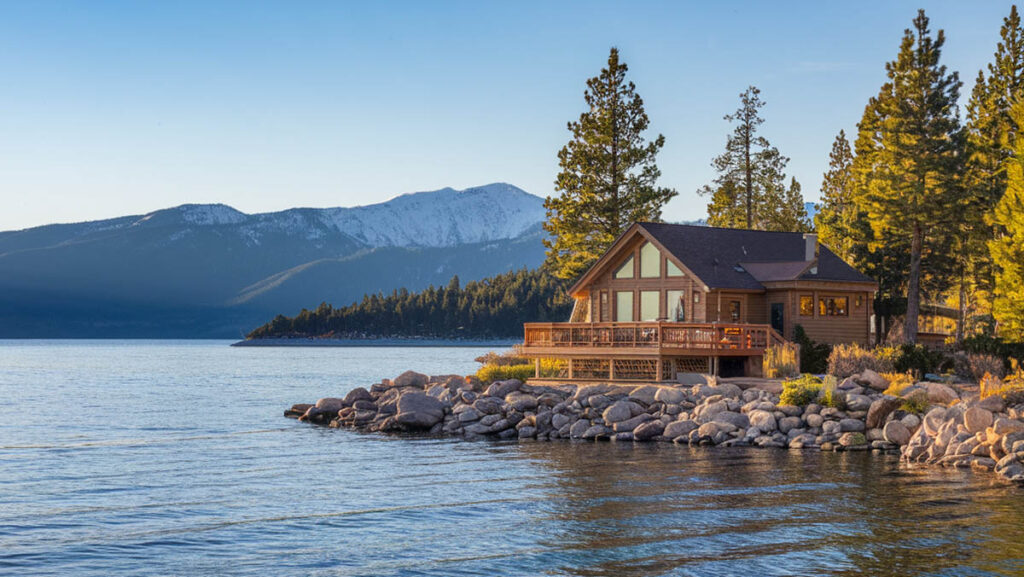
Designing your dream cabin? Before you dive into the world of floor plans and architectural styles, let’s talk basics. Getting clear on what you really need and want is key for picking a cabin plan you’ll truly love.
I’m going to walk you through the most important factors to consider when selecting a cabin home plan. My goal is to help you create a future cabin that perfectly fits your vision of mountain living. Sound good? Alright, let’s get started!
Define Your Cabin’s Purpose
The way you intend to use your cabin should directly shape its design. Will it be a:
Vacation Home: Focus on fun recreational spaces for part-time use. Go lighter on storage and gear more towards relaxation.
Permanent Residence: Emphasize year-round livability and functionality. Storage space and amenities will be more important.
Rental Cabin: Optimize layouts to comfortably fit guests. Use durable, low-maintenance materials that can handle heavy traffic.
Once you pick its purpose, make sure your floor plan supports that use case. A party cabin looks quite different from a cozy writer’s retreat!
Calculate Your Occupancy
To properly size and outfit your cabin, determine how many people need to comfortably live, play, sleep and store their stuff within its walls. Factor in:
- The size of your family/friend group during typical and peak visits
- Whether you’ll need dedicated bedrooms or plan to use shared sleeping spaces
- Accessibility considerations if anyone has mobility limitations
- Storage requirements for seasonal gear, equipment, vehicles etc.
Crunch Those Numbers: Create Your Budget
This step isn’t glamorous, but nailing down realistic costs is vital. Be comprehensive by tallying:
- Land purchase
- Site prep
- Construction materials and labor
- Permits and fees
- Utility hookups
- Furnishings
- Ongoing maintenance funds
And remember to build in a 10-20% contingency in case unexpected costs pop up. Investing the effort to budget properly now pays off tremendously down the road.
Finally, Review Your Timeline
Building a cabin in the mountains comes with unique considerations around:
- Seasonal weather constraints for construction
- Local labor and material availability in rural areas
- Meeting permitting requirements and building codes
- Navigating remote access roads and terrain
Cabin Architectural Styles and Features
When envisioning your dream cabin retreat, the architectural style you choose sets the tone for both the external curb appeal and internal functionality. From a classic log cabin oozing rustic mountain charm to a sleek modern glass box opening to the elements, each design offers its own aesthetic appeal and practical perks.
Traditional Log Cabin
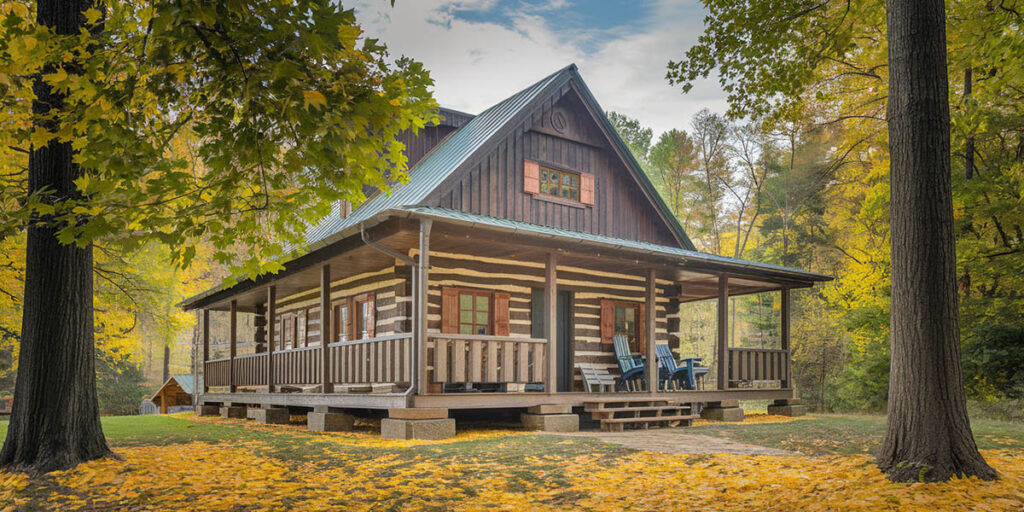
Let’s start with the quintessential traditional log cabin style, which conjures images of historical homesteads with its solid timber construction. Prominent stacked stone chimneys bracket classic log cabins, while deep roof overhangs skirt small, rectangular footprints. Wraparound porches welcome you inside, where soaring cathedral ceilings lined in timber beams top exposed interior log walls. Large windows set in wood frames become focal points, often centered on a stone fireplace radiating winter warmth. Traditional dovetail corner joinery and rough-hewn wood finishes reinforce the natural, outdoorsy vibe.
Opting for a traditional log cabin delivers excellent thermal mass thanks to those chunky logs, paired with a true mountain aesthetic that connects you to the surrounding nature. Time-tested building methods ensure durable construction to withstand the elements in a design proven over centuries. For a classic cabin that infuses artisan mountain spirit into every hand-crafted detail, the traditional log cabin calls your name.
Modern Rustic Cabin
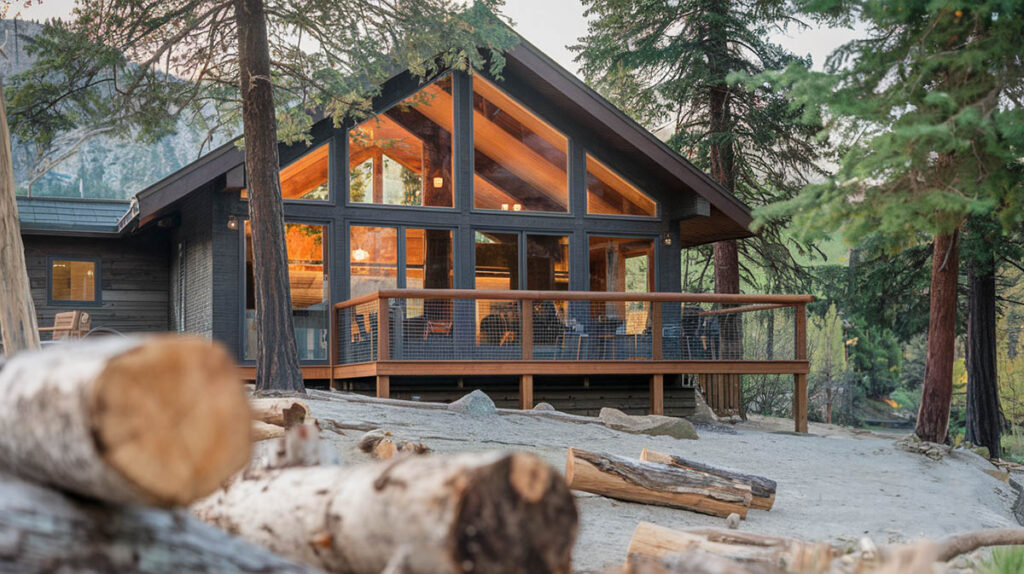
The modern rustic style for cabins is a blend of the traditional paired with newer contemporary features. This typically includes the use of both natural, and modern building materials for exteriors. There’s often plenty of wood siding or stacked stone paired with large expanses of glass and clean lines. Inside, the windows and doors perfectly frame outdoor views, seamlessly connecting the interior rooms to the surrounding landscape.
The open floor plan common in these homes helps underscore their modern vibe. You get a spacious, airy feel from the vaulted ceilings and simplified structural elements left exposed as an ode to the traditional cabin aesthetic. The fixtures and furnishings also bridge old and new – a brushed nickel chandelier here, a repurposed wood console table there.
One of the biggest perks of going for a modern rustic style is that it lends itself well to flexible space usage. The neutral but organic color palette and strategic lighting design make it comfortable yet casually elegant. And you can always add your own touches over time. Ultimately, these cabins offer a wonderful balance of laidback warmth and contemporary panache with broad lifestyle appeal.
Contemporary Cabin
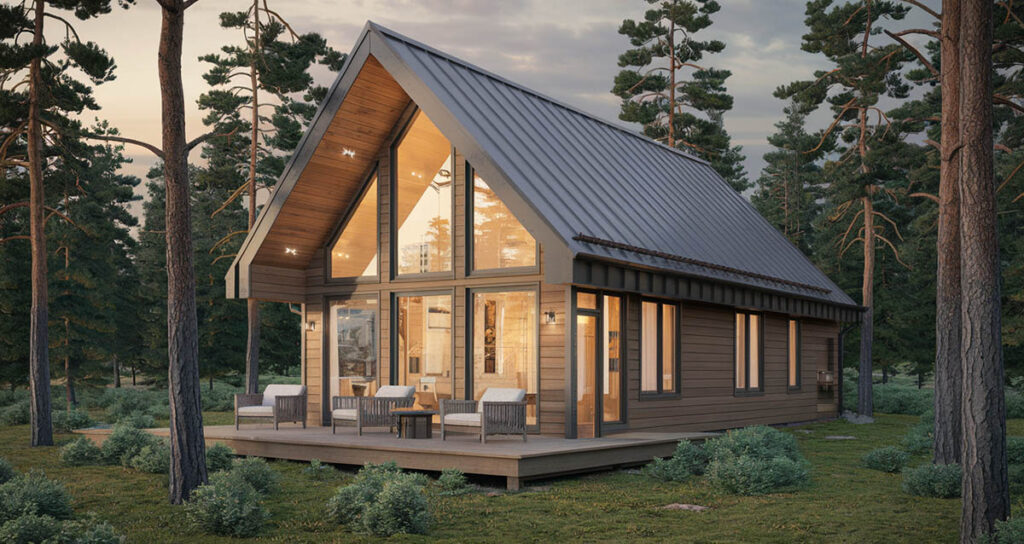
When it comes to contemporary cabins, less is often more. These modern mountain getaways focus on clean lines, tons of natural light, and creative touches. Gone are the days of dark, rustic cabins with tiny windows and dated decor. The contemporary cabin embraces airy, open spaces flooded with light, frameless glass windows stretching whole walls, and minimal ornamentation to let the views shine.
With its focus on oversized glass windows to seamlessly connect indoor and outdoor living, these designs can offer beautiful vistas from nearly every room. Skylights and clerestory windows also usher in natural light to brighten sleek, neutral interiors. The contemporary cabin takes advantage of site, perching intelligently on the land to maximize scenic outlooks from every angle.
Beyond the windows, contemporary cabins incorporate other progressive features like smart home technology, sustainable building materials, and flexible modular furniture for multi-functional living spaces. Built-in storage solutions allow for clutter-free interiors, while energy-efficient insulation, lighting and appliances reduce the cabin’s environmental impact.
The result is a unique sylvan retreat that feels at once modern, inventive and connected to the outdoors.
A-Frame Cabin
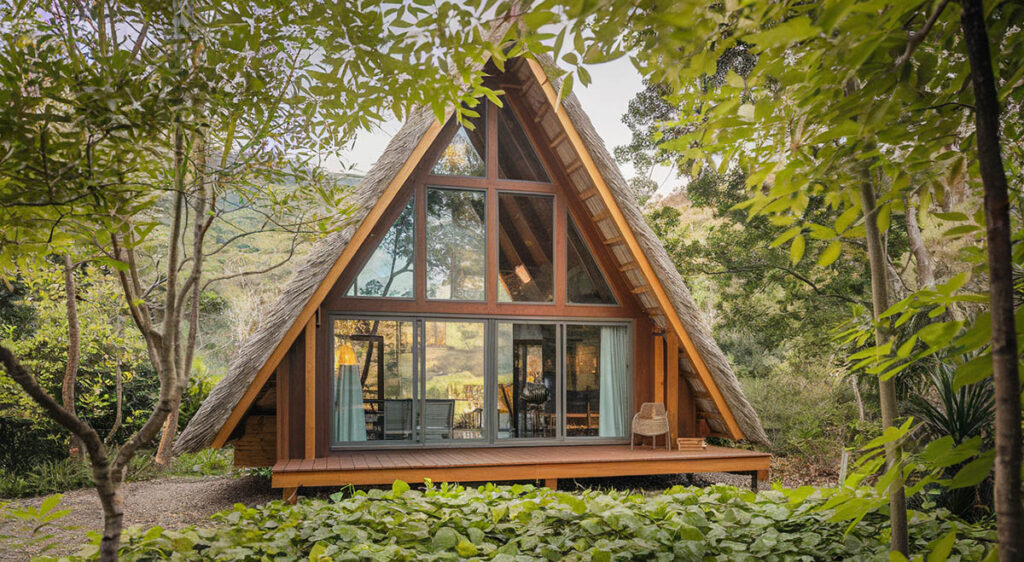
With its steep sloped roofline that goes all the way to the ground, the A-frame cabin makes a dramatic visual statement. The signature triangular profile stands out in any setting, instantly recognizable. But beyond curb appeal, this smart design takes advantage of the angle of its walls to create an airy, light-filled interior with a surprisingly spacious feel despite a modest footprint.
Step inside and prepare to gaze upward through the towering ceiling to the loft space above. The abundance of windows, including large panes across the front and back, flood the interior with natural light. Built-in storage solutions maximize the functionality of every inch while preserving openness. Sleeping areas tucked cozily under the eaves take advantage of unused space.
The A-frame form factors in other practical advantages as well. With less exterior wall space and a shape that naturally sheds snow and debris, construction costs are reduced. Minimal surface area also increases energy efficiency. Form and function combine in this iconic structure to provide rustic, sloped-ceiling charm as well as livability and value.
Hybrid Cabins

Hybrid cabins creatively blend different architectural elements to create unique and personalized getaways.Think rich, warm wood finishes meets sleek steel beams. Or rustic stone fireplaces combined with modern open floor plans awash in natural light. Mixing design eras and material palettes allows for cabins with diverse rooflines, window arrangements, and transitional spaces that seem to bridge cabin style genres.
An example of this could be a Scandinavian-styled A-frame with repurposed wood accents and durable elements like polished concrete floors. Or try a more conventional approach with exposed log construction showcasing impressive vaulted ceilings, wrought iron fixtures, and hand-scraped oak floors.
The flexibility of the hybrid approach means regional influences can shine through as well. Imagine blending Pacific Northwest natural elements like forest views and locally-sourced timbers with some cozy cabin essentials – a towering river rock fireplace or deep-set window seats, anyone? While hybrids involve more customization upfront, they allow you to hand pick signature details that reflect your tastes and needs.
Materials And Construction Methods
For your build, you have several construction methods to consider. Log construction uses interlocking timber logs stacked horizontally to form the walls. This traditional technique creates a rugged, natural aesthetic while providing excellent insulation. Timber framing is another option which utilizes heavy timber posts and beams joined together to make the structural skeleton of the cabin.
Conventional stick-built homes are framed with dimensional lumber in a wood platform construction. This faster, more affordable method lends itself well to standard floorplans. Or, you may opt for a prefabricated cabin which is partially built offsite in a factory to save time and labor costs. These modern kits allow more customization than you may think.
Finally, consider sustainable materials like reclaimed wood, forest stewardship-certified lumber, or eco-friendly insulation which align with green building best practices. Carefully weighing the pros and cons of each method will lead you to the right cabin construction choice for your property and budget.
Essential House Design Elements
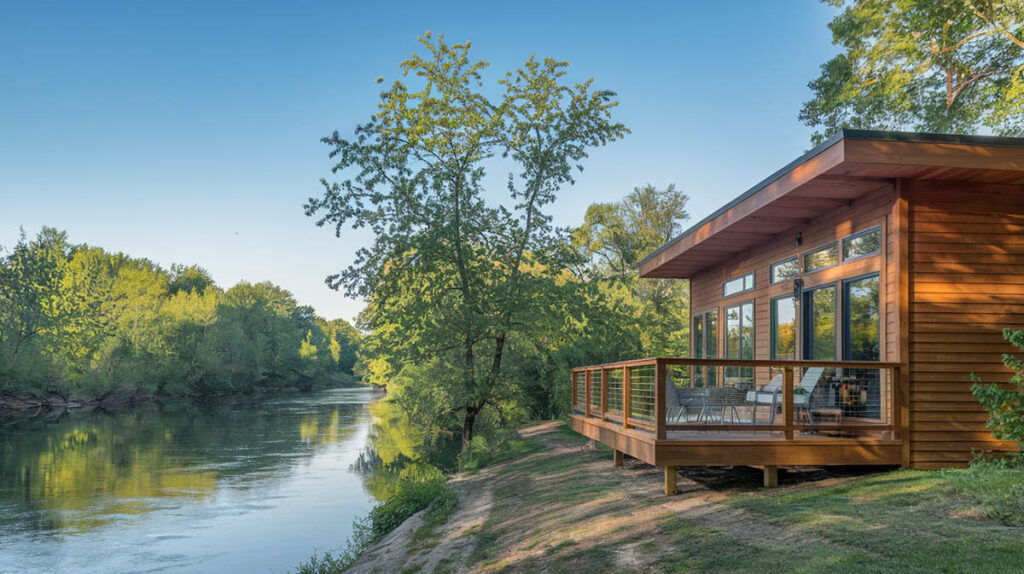
One of the important questions to decide early on is how many bedrooms and bathrooms will provide enough space for your family and guests. Will a luxurious master suite with an ensuite bath suffice, or are multiple bedrooms necessary?
The living spaces set the tone for relaxation and connection, so design an open concept kitchen, dining and sitting area conducive to conversation. Center the layout around a large stone fireplace to warm up after long days on the slopes or the lake. Include plentiful seating, a televsion nook and window seats to admire mountain views.
Speaking of views, extend your living space to the outdoors by including a deck, patio and porch. Whether you envision lazy mornings with coffee on the porch swing or evenings grilling on the deck, outdoor areas expand your enjoyment. Use the layout and positioning to capitalize on sunlight, views and access to the yard.
When designing the kitchen, opt for materials like quartz counters and distressed wood cabinetry that withstand frequent use and feel cozy and inviting. Install a large center island for gathering, preparing meals and casual dining in view of the family room. Stock up on storage like deep lower cabinets, pantry closet and shelving to neatly tuck away stand mixers, serving ware and small appliances.
Build in storage beyond the kitchen too. Incorporate built-in bookshelves, under-bed drawers, closets and multi-use mudrooms to hide gear, linens, clothes and other essentials. Careful storage planning prevents a cluttered look in the compact space.
Important Design Decisions
Insulation and weather protection should be top priorities. Install high-quality insulation in the floors, walls, and ceilings to handle temperature extremes. Strategically placed windows allow daylight to flood interior spaces while minimizing heat loss. Protect against the elements by incorporating overhanging eaves, covered porches, and durable exterior materials.
In terms of functionality, consider an efficient heating system, whether a wood stove, mini-split units, or something else. Build in space-saving storage solutions like lofts, under-stair cubbies, and multi-purpose built-ins to stow gear.
To personalize your refuge, add character with a cozy fireplace, sprawling deck, or front porch with scenic views. Use the high ceilings to create a sleeping loft, opening up the floor plan. Frame the forest or mountainscapes with large picture windows. Turn a basic cabin into your own with unique finishes like reclaimed wood accents or antique lighting fixtures.
Evaluating Your Building Site
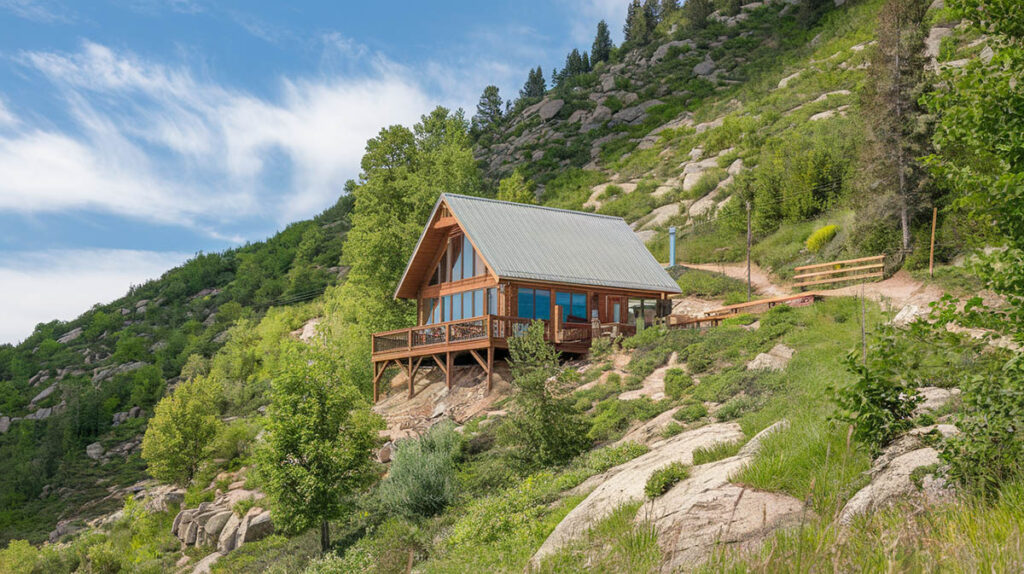
Choosing the perfect spot to build your cabin is an exciting first step! But before you grab a shovel, let’s assess your site to avoid costly surprises down the road. The land itself will shape what design options make sense.
First, scan the terrain. A flat or gently sloping landscape keeps construction straightforward and affordable. But hillier areas on a budget may need some creativity! Steep grades could require retaining walls or foundations anchoring into bedrock. If huge boulders dot the slopes, we’ll have to nimbly design around them.
Next, dig in with some soil tests across your site. We want to check the load-bearing capacity to see what a foundation must support. And know whether drainage is fast or slow based on soil type – that guides septic options. If tests reveal dense clay or loose silt, we may have erosion control in our future.
Finally, survey for any natural bonuses…or obstacles. Large trees provide beauty and shade – but could topple onto your cabin if unhealthy. Scope out streams and watersheds that could overflow, even if they seem quaint. And importantly, are there any striking vistas to showcase through your floor-to-ceiling windows?
Determining Building Site Sun Exposure
When designing a cabin, strategically consider how sunlight will dance across the rooms. Solar energy offers free lighting and heating if you plan thoughtfully.
Track the arc of sunshine throughout days and seasons. Where does bright light first spill across the forest floor in the morning? Which windows capture midday beams that stretch from one wall to another? Observe how the lowering afternoon light casts shadows.
Position main living spaces to soak up sunshine. A breakfast nook warmed at dawn welcomes you to sip coffee as the rising sun sparks the new day. The combined kitchen and dining room glow under lunchtime rays pouring through broad south-facing windows.
Yet sunlight has seasons too. When planning windows, picture summer shade from leafy branches that allow winter light through.Neighbors’ homes or garages may also shade your site during different seasons. Consider current and future structures that alter the solar exposure.
Strategically place and size windows to welcome sunshine in winter while avoiding overheating come summer. Generous glass along southern walls freely admits low-angled rays, with roof overhangs scaled to block high summer sun while allowing winter warmth.
Rather than a flat façade, create depth and dimension for both beauty and function. Window placements to catch reliable cross breezes prevent stagnant indoor air. Outdoor living spaces ringed with plantings or pergolas give lounging and dining areas filtered sunlight or cooling shade as desired across the seasons.
Understanding Local Climate
When planning your home placement, it’s crucial to consider local climate conditions that will impact many aspects of your plans. The weather patterns in your area will shape key decisions during the process.
For starters, look at annual precipitation levels. Whether it’s mostly rainfall or heavy winter snows, understanding total moisture levels will determine needs like roof pitch, drainage systems, and flooding risks. Speaking of snow, pay attention to typical snowfall accumulations in the region. Combined with common wind zones, this will guide structural reinforcements and drift protections you’ll want to factor in.
Beyond precipitation, be aware of temperature extremes in your area. The range between seasonal highs and lows plays a major role in insulation requirements, HVAC sizing, and construction materials needed to withstand shifts. Swings between freezing and thawing can stress building components. Prepare appropriately.
In addition to typical weather patterns, don’t ignore severe storm threats. From hurricanes to ice storms and wildfires, comprehending your location’s disaster frequency steers choices for resilient building techniques, emergency provisions, access routes, and more.
Building Design Adaptations
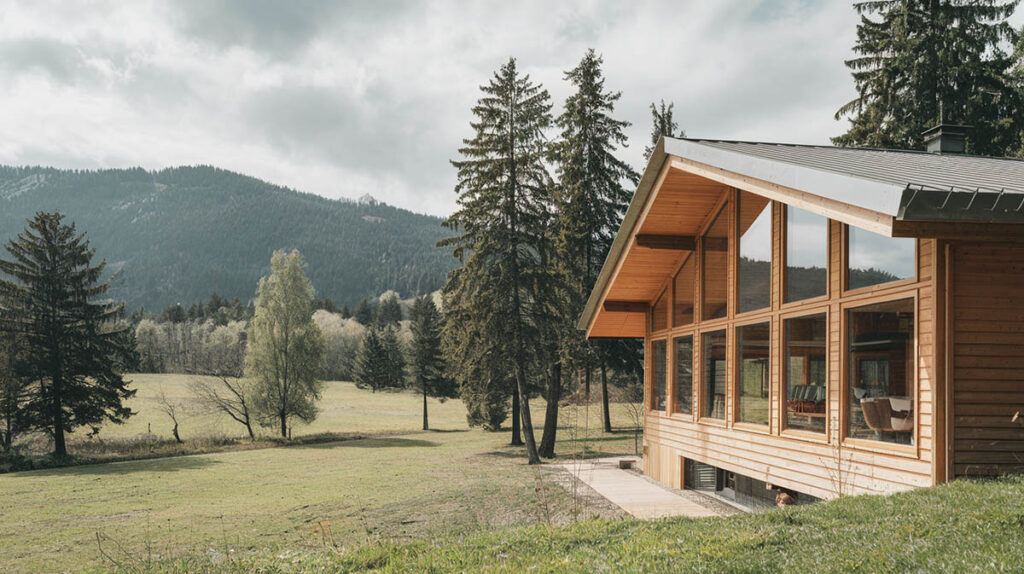
With location and climate in mind, let’s start with adapting the structural design. If built in an area with heavy snowfall, a steeper roof pitch allows snow to easily shed to prevent collapse or leaks. Choose wind-resistant building methods like cross-bracing walls and roof connections in hurricane or tornado zones. Proper insulation values keep heat in during brutal winters or vice versa for blistering summers. Be sure to utilize durable, weather-resistant exterior materials that can withstand all the elements year-round. Position the cabin so prevailing storms blow against the shortest side instead of broadside.
Now, before breaking ground, it’s crucial to check zoning laws and building codes to avoid headaches down the road. Each region and municipality has its own local regulations to be aware of early on:
- Setback requirements dictate how close you can build to the property lines. Don’t get carried away planning your floorplan until knowing these boundaries.
- Height restrictions determine the maximum height allowed. Consider a single-story design if local codes are strict.
- Lot coverage limitations influence the cabin’s footprint. Build vertically if you can’t stretch out.
- Environmental protection zones safeguard vulnerable habitats. Expect more hoops to jump through to build here.
- Historic preservation rules aim to maintain an area’s character. Design your cabin to fit not stand out.
Following zoning and code ordinances during planning saves on revisions and ensures your rural retreat complies without issue.
Building Code Requirements
First up is making sure your cozy cabin design meets structural regulations. You’ll need specifications for snow load capacity, wind resistance, and seismic standards to create a safe, sturdy shelter. It also must have fire safety measures like smoke detectors, fire extinguishers, and clearly marked escape routes. Energy efficiency is key for an off-grid getaway, so you’ll need to meet insulation, ventilation, and sustainable power standards. Don’t forget about wheelchair ramp options and wide doorway access either for future-proof universal design.
Now comes the less exciting permit process. Budget 4-6 weeks for approvals before breaking ground. Documentation needed includes detailed cabin plans, energy calculations, septic system design, and material lists. Expect 2-3 inspections during framing, plumbing, and final build stages. Permit fees vary by municipality but typically run a few thousand dollars. If your unconventional cabin design needs a variance, add in some extra application time.
Evaluating Utility Availability
Before committing to a cabin site, it’s crucial to evaluate utility availability and expenses. Electric service factors heavily into site selection and building plans. How far away are existing power lines? What fees apply to connect and what disruptions might occur? Depending on location, solar panels or wind turbines could supplement grid electricity. And determine if a generator or batteries work best for backup during outages.
Securing a clean, reliable water source is also vital. Can the municipal supply be tapped or does a well need installing? In either case, test water quality thoroughly. And factor in components like storage tanks, piping, pressure pumps or treatment depending on test findings.
Wastewater management rounds out utility planning. If accessible, public sewer hookups keep disposal simplest. But in their absence, soil tests reveal if a septic system is feasible. Percolation rates indicate drainage field sizing and site constraints. Ongoing septic maintenance helps avoid issues like clogs or groundwater contamination. Factor servicing costs into the budget.
Additional services to consider include phone, and internet connectivity, emergency services and access to propane or natural gas.
Working With Builders
As you envision the perfect cabin retreat, the first step is gathering the right team of professionals. Choosing an architect with experience designing cabins allows you to select from thoughtfully-crafted home plans suited to your vision. Seek recommendations for local builders with proven reliability regarding workmanship and punctuality. It’s wise to consult early with experts like permit offices, utility companies, and landscapers to understand requirements in your area.
Once the blueprints are finalized, it’s time to crunch numbers. Construction costs vary widely based on cabin size, custom designs, and local labor rates. Expenses also pile up from building materials, site preparation like clearing land and pouring foundations, installing septic, electric, and wells, plus future maintenance needs. Savvy builders help navigate cost trade-offs to protect your budget. Focusing on must-have features while scaling back less essential spaces can yield rewarding results without overspending.
Choosing A Cabin Style
When selecting a cabin design, you have plenty of charming architectural styles to consider. Rustic log cabins exude cozy, nostalgic vibes with their horizontal wooden logs and stone chimneys. Contemporary cabins take a sleeker approach with lots of glass, steel, and open spaces. Traditional mountain cabins feature gabled roofs and quaint covered porches that beckon you to relax.
The style you select comes down to personal taste as well as practical factors. Work within your budget. Account for site conditions like sun exposure, views, terrain, and climate. Identify must-have spaces and features based on how you want to enjoy the cabin.
The exciting part? You’re not limited to a single style. Modern home plans seamlessly blend elements from different looks. Work with an experienced builder to create a custom design that brings your unique cabin vision to life. You get to craft a personal sanctuary that both awes and serves you for years to come.
See our collection of cabins in our store.
